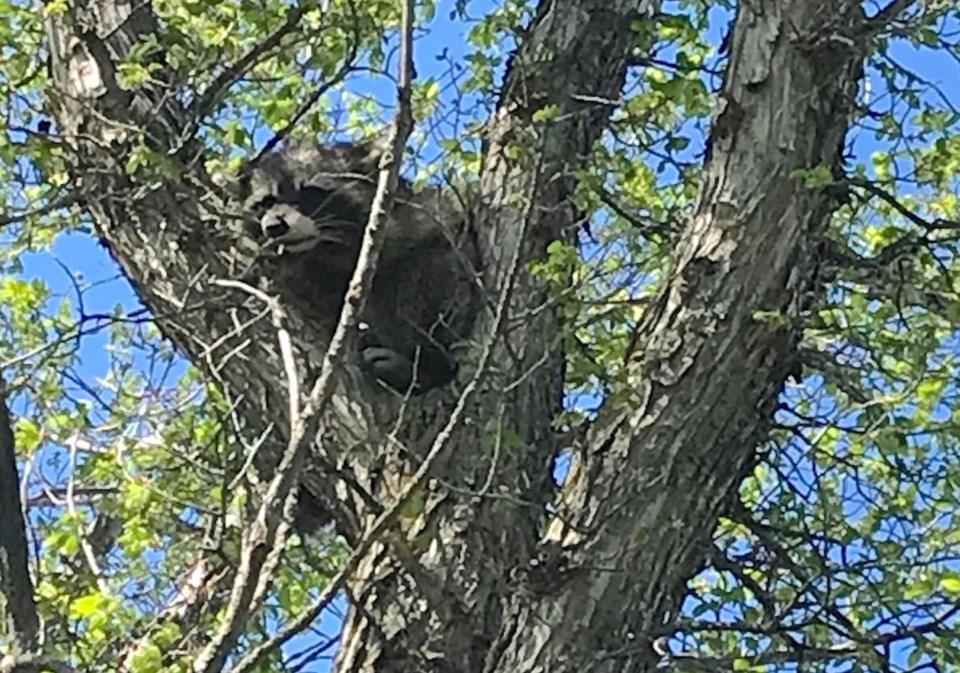WESTLOCK – If you think you’re seeing a raccoon in the Westlock area, you may not be seeing things.
Westlock County resident Brandy Reid saw a raccoon in her backyard, off Township Road 590 near Rainbow Trout Pond, the afternoon of May 30.
“At first I thought it was a porcupine because why would there be a raccoon around here,” said Reid. “I think it’s a very rare sighting — I don’t think they’re supposed to be in Alberta.”
Reid said she was surprised by the unusual sighting, her first raccoon she has seen in Alberta since moving here 14 years ago.
“He was pretty big,” she said. “I was excited actually. I sat out there for a while watching it.”
With an increase in population of the black and grey masked critters, raccoon sightings across the region and northern Alberta have also increased in recent years. At one time it was considered a rare sighting.
Mike Ewald, provincial problem wildlife specialist with Fish and Wildlife Alberta based in Barrhead, said there have been increased sightings in the region in recent years.
“They are extremely common in southern Alberta and there’s been more and more reports of raccoon sightings north of Edmonton,” said Ewald, noting that wildlife officers are not tracking them or monitoring raccoons in the region. “It’s not a shock that they’re here anymore.”
Ewald wants to remind people in Westlock County and the region, to approach raccoons with the same caution as they would when dealing with skunks, foxes or bats, because they are known carriers of rabies, although rabies incidents in the region have been very low for a long time.
“It’s been quite a while since we’ve had any confirmed cases of rabies,” said Ewald. “Whether it’s a raccoon or a weasel or anything else, they still have teeth and who knows what kind of disease they may be carrying.”
Known as the garbage bandit, raccoons can be mischievous and can become nuisance animals.
“Raccoon can be quite a pest and people should really educate themselves on the pesky little critters they can be,” said Ewald, noting that with more raccoon sightings, people need to be more aware and more diligent.
“It’s just another reminder for people to make sure they keep all of their attractants secure. That includes not just garbage, because raccoons love getting into garbage, but also cat food, dog food and things like that as well that they may leave in an open dish on a deck,” he said.
It has been thought that raccoons cannot survive Alberta’s harsh winters but that is not the case noted Ewald.
“I don’t believe that raccoons have any issues with the harsh winters. They just learn to adapt to the different food sources that are here,” he said. “That’s where again, people have to be that much more aware to not leave any unnatural food sources out there — whether it’s raccoons, or skunks or bears, it doesn’t matter. If you’re not keeping care of the attractants that are out there, then you’re going to have this wildlife become more habituated to people and could become more of a problem.”
If there are concerns over dangerous animals or illegal hunting or fishing activity or if a raccoon, fox or skunk is acting in an "abnormal" way, they can call a Fish and Wildlife Alberta hotline at 1-800-642-3800.



